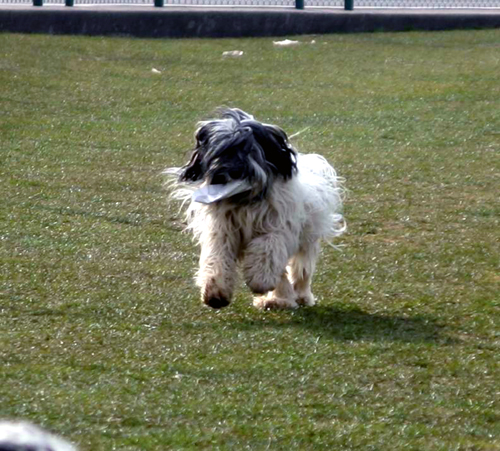|
 |
Hepatozoonosis may
only be endemic in Texas, Louisiana, Mississippi,
Oklahoma, Alabama, Georgia, Florida, Arkansas and
Tennessee at present, but odd cases are beginning to
show up all over North America, and that is a reason
for concern. Not only may vets miss the diagnosis,
which will be fatal for the affected dog, but
meanwhile that dog will be replicating the causative
organism and potentially causing a problem for other
animals.
|
Unlike the other tick borne
diseases dogs become infected with Hepatozoon americanum not by
being bitten by the tick, but by eating it. The dog may do
this in self-grooming, but often outbreaks of the disease are
linked to hunting. After taking the more desirable cuts
from the deer the hunter will throw the lower leg to the dogs,
and in that way they can ingest a lot of ticks in a short time.
Once the dog has swallowed the tick, sporozoites are released
into the gut, and engulfed by cells called macrophages, which
carry them throughout the body. They then form cysts,
where the organism reproduces until the cyst bursts releasing
the next growth stage – merozoites. Some of these in
turn are eaten by white cells – neutrophils, and then
swallowed by ticks feasting on the dog, which can then infect
the next dog to eat them. Every time a cyst bursts the dog
will experience muscle pain and be very sore. The
dog has trouble rising, and they walk stiffly. They
don’t like turning their heads. They will have a high
temperature – usually around 105oF too, so that the problem
may be misidentified as meningitis. Muscles may atrophy.
One thing that will set the hepatozoonosis apart is that the
dogs will discharge pus from their eyes. Not surprisingly
they will stop eating and lose weight and they are very weak.
The disease appears to come and go, and between releases of
merozoites the dog may seem to recover.
Initial diagnosis can be made
by a blood test offered by Auburn College of Veterinary
medicine, and sometimes the organism can be seen on blood
smears. Chronic cases are better diagnosed by muscle
biopsy. White cells will be elevated, and there is often a
non-regenerative anemia. Unlike other TBD platelet numbers
are usually normal or even elevated.
|
Left untreated
dogs will usually die within 7 months of infection.
Initial treatment is with a combination of the
antibiotics trimethoprim-sulfadiazine and clindamycin
and the antiprotozoal pyrimethamine for 2 weeks.
Dogs may require pain killers and also fluid therapy
too. Dogs will appear normal after 3 or 4 days,
however, they will relapse without further treatment.
A drug called decoquinate must be started as soon as
the combination treatment ends, and is given daily
until the dog tests negative. This can be for 2
years or more.
|
 |
|

